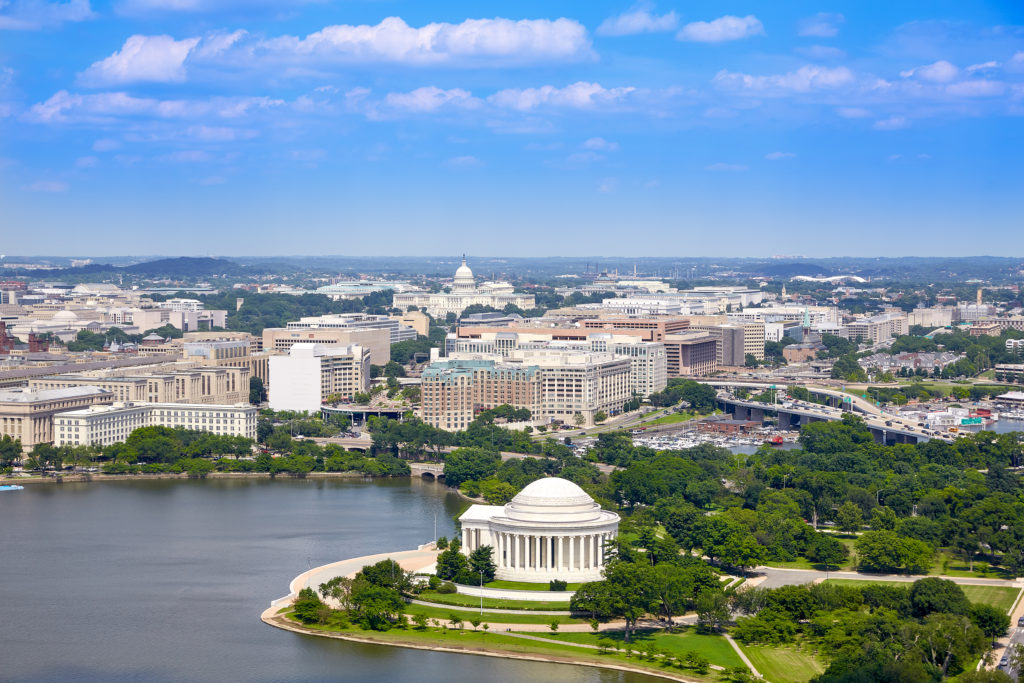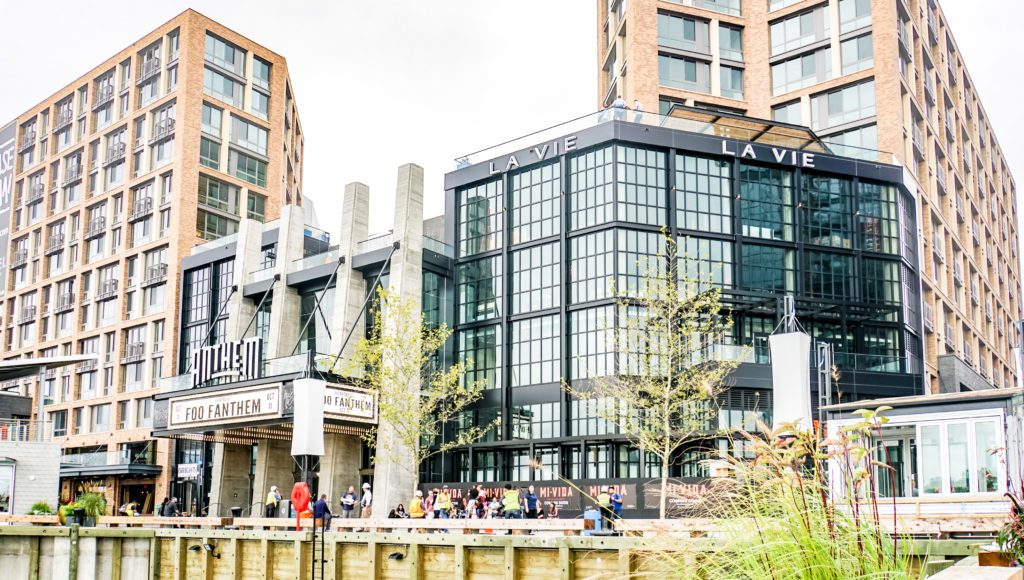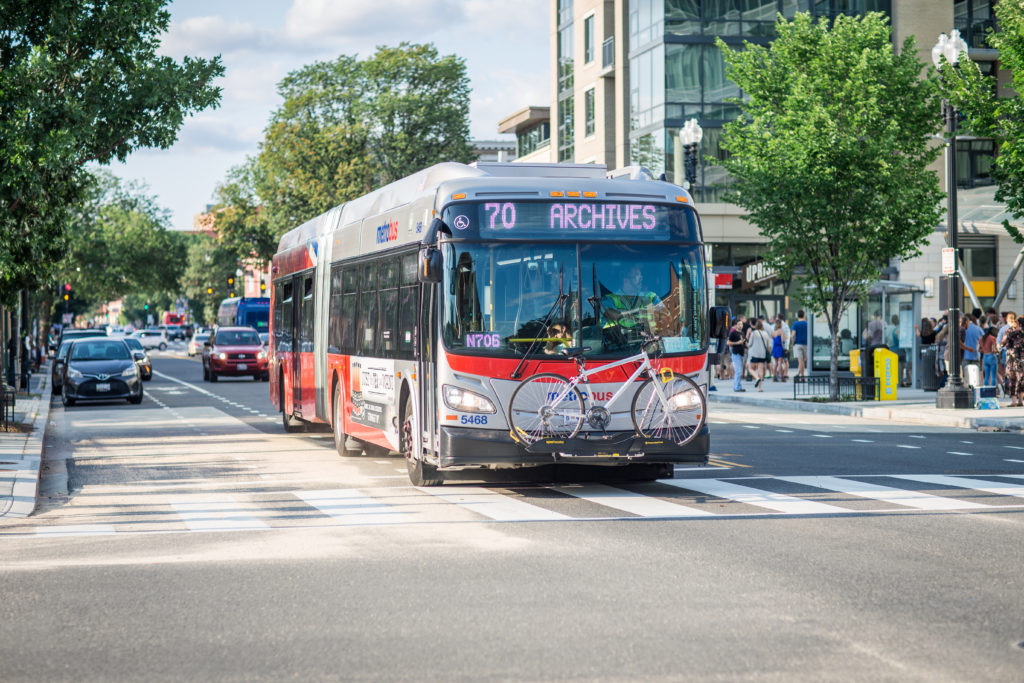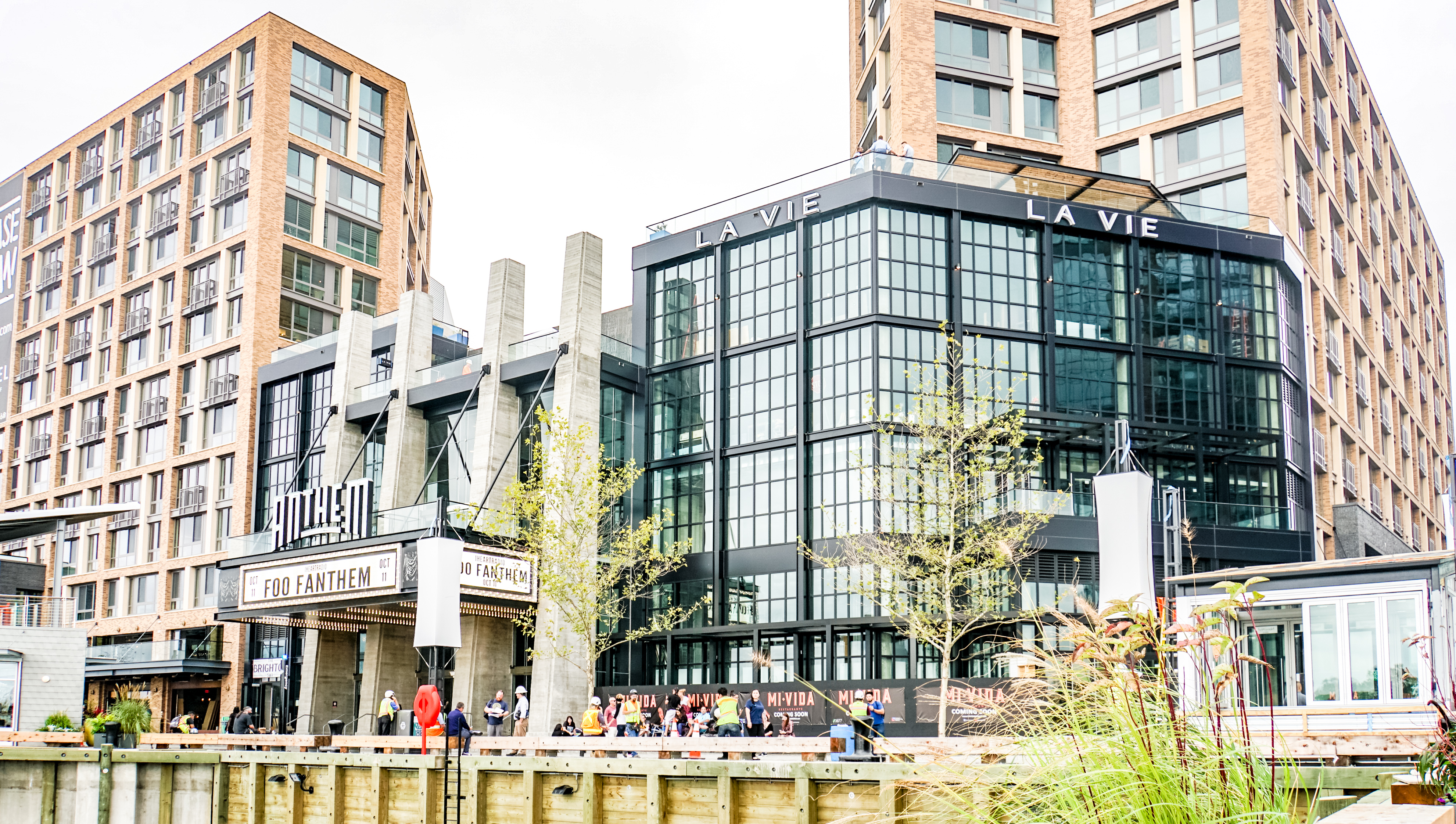This article is adapted from the 2019 State of the Business Report, “Building a Competitive City: Strengths, weaknesses, and potential paths of growth for the District of Columbia,” prepared by the D.C. Policy Center for the DC Chamber of Commerce.

INTRODUCTION: INTRA-REGIONAL DYNAMICS IN THE WASHINGTON METROPOLITAN AREA
The Washington-Arlington-Alexandria, DC-VA-MD-WV Metropolitan Area (Washington metropolitan area, for short) is one of the top regions in the US for entrepreneurship, economic innovation, and high-growth firms.
With a strong employment base anchored by 364,000 federal employees and many more in adjacent private industries, the Washington metropolitan area has the fifth largest GDP in the country and the third-highest density of high-growth companies. The region has attracted over 44 new company headquarters with 500 or more employees since 2000—including the recent addition, in late 2018, of Amazon’s much-anticipated HQ2. The various jurisdictions that make up the region benefit from each other’s economic strength, as they share the same consumer base, workforce, and economic opportunities.
The Washington metropolitan area is made up of 24 jurisdictions that span across three states and the District of Columbia. Each jurisdiction contributes different types of labor, housing opportunities, and entrepreneurial talent to the region’s large economic base. Administrative differences across the region create a mosaic of communities with different amenities, business environments, housing opportunities, and education systems. Yet the metropolitan area’s jurisdictions share many other factors, such as underlying economic conditions, access to capital, the skill levels of the labor force, or availability of employment opportunities within a commuting distance.
These shared economic factors mean that residents, workers, and business establishments move often, and frequently cross jurisdictional lines. Businesses—start-ups, new transplants, and existing establishments—must choose where to locate within the region, continuously considering whether to open their doors in D.C. or Arlington, Rockville or Crystal City, Manassas or Fairfax, with an eye to profitability and growth. Residents and workers weigh their potential earnings and benefits from holding a job against various costs, such as the time and money spent commuting, the cost of childcare and housing, or the quality of neighborhood amenities—all with an eye toward prosperity and a shot for upward economic mobility.
Thus, while they go through the ups and downs of the business cycle together, jurisdictions within the metropolitan area constantly compete for business establishments, employees, and residents. Policies that shape economic, fiscal, and business conditions can help jurisdictions capture a larger share of the economic activity in the region.
BUILDING A COMPETITIVE CITY
A competitive city is one that is attractive to businesses, workers, and residents, all at once. Each of these factors—business establishments, workers, and residents—helps create an economic environment that can provide opportunities for growth and upward mobility. In this way, a competitive city creates economic value that can be tapped to eliminate extreme poverty and promote shared prosperity.
How can D.C. become more competitive within the Washington metropolitan area?
The Washington metropolitan area is one of the top regions in the country for economic innovation, entrepreneurship, and high-growth firms. Within the metropolitan area, however, jurisdictions experience different economic outcomes because of the decisions they make that affect the flow of businesses, workers, and residents across their borders. These forces are constantly shifting: The District has seen significant economic and residential growth in recent years. At the same time, the dynamics of the metropolitan area—and D.C.’s place within it—have changed over time, moving jobs and people out beyond the core counties of the metropolitan area and altering the relative power of D.C. and its suburbs and exurbs.
In order to adjust to these changes and become a more competitive city within the Washington metropolitan area, the District of Columbia must assess its strong and weak competitive factors for businesses, workers, and residents.

Photo by Ted Eytan (Source)
Businesses need strong economic conditions, skilled workers, and a stable business climate.
A significant challenge for any business is managing uncertainty and risk. The most salient sources of uncertainty and risk that affect the metropolitan area are beyond its control: Recessionary and expansionary cycles, changes in interest rates and aggregate demand, federal government actions, and so forth. But while these circumstances have a deeper effect on business fundamentals, state and local decisions including regulatory actions and changes to jurisdictional tax regimes also shape business decisions on where to locate within the Washington metropolitan area.
In D.C., business establishments most frequently mentioned slow business or lost sales as a barrier to profitability, followed by unpredictability of business conditions and taxes. Concerns across the metropolitan area are similar, and sometimes stronger for these issues. The District is also less welcoming to and supportive of women- and minority-owned businesses than some other jurisdictions in the region.

Workers need an attractive compensation package, a depth of employment opportunities, and manageable commutes.
In the region, D.C. has many factors in its favor making it attractive to workers: high average wages, a variety of employer benefits, strong worker protections, and relatively short commute times. At the same time, the concentration of D.C.’s employment opportunities in high-skill, high-paying jobs means that there are few opportunities for workers without professional degrees. In contrast, the rest of the metropolitan area has a higher concentration of middle- and low-wage jobs, including sales occupations, and occupations in education, transportation, and construction. Through aggressive professional licensing, D.C. also has created barriers for workers who wish to break into middle-wage jobs. Nearly 12 percent of D.C.’s private sector employment is in occupations regulated by a professional licensing board.

Residents need affordable housing, quality amenities, and paths to upward economic mobility.
D.C. is still the region’s most expensive place to live, even after taking higher average wages into account. This higher cost of living includes not only high housing costs, but also costs like childcare—which can account for over a third of the household budget for a family of four. However, D.C. is not alone in its struggles to provide housing that is affordable to families at a variety of income levels: 12 of the 24 jurisdictions in the metropolitan region are estimated to have higher housing costs than D.C. for families, including Fairfax and Arlington counties. However, unlike jurisdictions such as Fairfax City, Fairfax, and Loudoun, which offer low- and middle-income residents opportunities for economic mobility, D.C. scores extremely low on economic mobility measures in comparison to other parts of the metropolitan region and to the rest of the country.
Read more in the 2019 State of Business Report, “Building a Competitive City: Strengths, weaknesses, and potential paths of growth for the District of Columbia.”
